*Author: Qiukaijun
This article contains 7848 Chinese characters and highlights the following points:
-
ChaoJi charging is a product of China’s high-power charging research, which has been advanced through communication with experts from Germany and Japan, and can support high-power charging of 350 kW to 900 KW, with the ability to increase range by over 300 km in just 10 minutes.
-
The high-power charging research group designed a high-power charging interface different from previous charging interfaces and later named it ChaoJi.
-
While demonstrating and verifying the technology’s maturity, ChaoJi charging is also drafting standards.
-
ChaoJi charging is inclusive, gathering the strengths of different parties, and offers both forward (backward compatibility with the old standard) and backward compatibility (with expandability). It can also support slow charging, enabling the unification of old standards in China, Japan, and Europe without causing waste.
-
Japan has confirmed that it will adopt ChaoJi charging interfaces, and the International Electrotechnical Commission (IEC) has adopted the ChaoJi plan. If Europe recognizes it, there is a chance for it to become a unified standard and the sole interface and system for electric vehicles worldwide.
The ambitious goal of having all electric vehicles worldwide use the same charging interface was initiated and led by China and has already gained support from Japan. There are efforts to make it an international, and eventually the only, standard.

The ChaoJi charging interface and standard support high-power charging, forward compatibility, safety, and expandability. “The Chaoji interface is not just solving the problem of high-power, but is a whole set of technical solutions for conducting charging,” said Liu Yongdong, Secretary-General of the Technical Committee for Standardization of Electric Vehicle Charging Facilities in the Energy Industry and Director of the Standards Management Center of the China Electricity Enterprise Federation at the end of January in his interview with Electric Vehicle Observer.
“We are creating a global unified plan to solve the problem of exporting one car model to the rest of the world,” said Ni Feng, Vice-Chairman of the Energy Industry Electric Vehicle Charging Facility Standard Technology Committee and Vice-Secretary-General for Standard Technology in the ChaoJi International Cooperation Project, and the Technical Coordinator for China’s Nanjing NARI Technology Research Center.
“Japan has already accepted this plan, and the next step is to coordinate the ChaoJi plan formed jointly by China and Japan with European standards. The ultimate goal is to hope that Europe will also accept this plan and make a global unified plan possible.”
For ChaoJi standard participants, using latecomer advantages to create advantages that other standards do not have allows China to have a significant voice in international standard-setting for the first time. Furthermore, if it can promote the unification of global electric vehicle charging interfaces, it would be a significant achievement.For consumers, under the ChaoJi interface, they can enjoy high-power charging of over 350 kW, which equals to replenishing over 300 km of driving range in just 10 minutes. This will attract more and more users of electric vehicles.
For Chinese car enterprises, by taking advantage of the leading opportunity to use ChaoJi charging, they can create outstanding charging experiences for their own products and provide convenience for the development of overseas markets.
For charging operators, high power is expected to bring higher asset utilization, and the curse of not making money from charging may be broken.
Before ChaoJi’s arrival, we should get to know it well.
From the seminar on high-power charging
ChaoJi charging originated from the seminar on high-power charging.
In March 2016, a group of technical experts from electric vehicle upstream and downstream companies such as China Electricity Council, State Grid, Nanjing NARI Group, and Aotecsun, who had just finished revising the 2015 version of the charging standard, held the first high-power charging technical seminar in Shenzhen.
“Almost five years have passed in a flash,” said Liu Yongdong. At that time, an industry consensus was that long charging time and poor experience were a problem blocking the development of electric vehicles. “We just want to study high-power charging.”
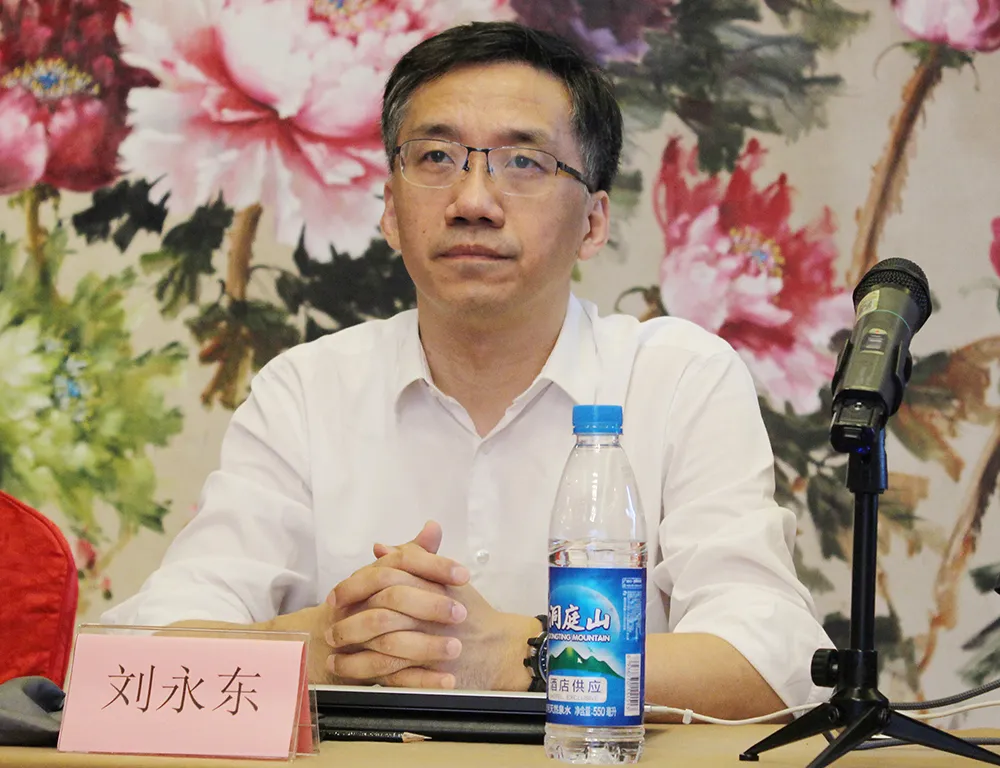
At that time, Europe had clearly proposed to build a high-power charging network system, but voices were not unanimous in China.
Opposing reasons included: many vehicles have a driving range of around 300 kilometers, and it is not necessary to use high-power charging; how to ensure safety for high-power charging; whether the power battery can support 2C, 3C, or even 5C, 6C charging; the impact on the power grid…
“So we conducted a survey first: Does China really need high-power charging? After the study, we came to the conclusion that there are several application scenarios that are necessary,” Liu said. For example, charging stations on highways; private owners of unattended electric vehicles in first-tier cities; pure electric commercial vehicles such as taxis, logistics vehicles, shared cars, heavy-duty trucks, and buses…
Aotecsun, headquartered in Shenzhen, was the co-host of this seminar. Aotecsun’s chief engineer Li Zhigang told Electric Vehicle Observer, “Aotecsun has been making charging products for 30 years, and we judged that the future development trend is high power.”
Li Zhigang believes that if electric vehicles are to replace gasoline vehicles and achieve a similar refueling experience, it is impossible to solve the problem of long charging time without the use of high power.
From the perspective of scenarios and consumer experience, it is necessary, but is it feasible?
Regarding the power battery, Li Zhigang mentioned that high-power charging itself has been commercially used as early as 2011, but at that time, it used lithium titanium batteries. Today, other battery technologies such as ternary are progressing rapidly and can support high-power charging.In the high-power working group, battery companies such as CATL and Microvast are also involved.
Batteries suitable for high-power fast charging seem to be ready. Xiang Yanhuo, the general manager of China passenger car solutions at CATL, said on January 27 at the GNEV11 conference, “We have fast charging battery technology of 1.6C, 2.2C, 3C, 4C, and 5C. Combined with the layout of fast charging stations of 350 kW or above, which will be promoted by the industry in the next few years, we believe that using flash charging technology of 4C or higher, it is expected to achieve the goal of 400 kilometers of endurance with a 15-minute charge.”
Some people are worried that high-power charging will affect battery life. Chu Zhengyu, a professor at Tsinghua University who has been engaged in battery safety research for many years, believes that high-power charging can achieve a balance between fast charging, temperature rise, and battery life within a certain safety range through internal cell detection and intelligent thermal management.
What about the investment in charging infrastructure? Li Zhigang said not to worry about wasting the investment. “We have already considered the compatibility issues with the old standard interface and will not start from scratch.”
In terms of high-power models, many domestic and foreign automakers are developing high-voltage platform models. Li Zhigang also reminded that after high-power charging models are launched in the future and widely accepted by users, it will definitely force all automakers to develop high-power models.
Liu Minghui, vice president of XPeng Motors, told “Electric Vehicle Observer” that there are two disadvantages that electric vehicles will continue to face for a long time if they want to compete with traditional cars, one is charging and endurance, and the other is cost.
Different automakers have different solutions for charging and endurance, but charging is relatively more important. XPeng Motors will also provide products with ultimate charging experience. One of the key points of the ultimate charging experience is to be fast.
Currently, Tesla and Porsche have already launched high-voltage platform models internationally, and BMW, Mercedes-Benz, and Audi all have plans. In China, FAW and BAIC and other car companies are already testing high-voltage platform models.
Can the power grid support high-power charging stations? Will it not have a negative impact on the power grid? Wu Bin, the head of marketing at State Grid Corporation of China, said, “Such a high power definitely requires a special transformer, and you have to apply for capacity. If the power grid gives you the capacity and you use it fully, there will be no problem for the power grid.”
Li Zhigang said that severe fluctuations are certainly not friendly to the grid, and energy storage can be introduced into charging stations to smooth the fluctuations. Charging stations can also establish a power response mechanism with the power supply department.
At the same time, Li Zhigang also reminded that in the current operation of charging stations, when the electricity consumption is in a peak period, the output of the charging machine will be limited according to the capacity that the transformer can withstand, which means that the power has already been reduced. “It is the same for high-power charging.”
After confirming the necessity and feasibility of high-power charging, the China Electricity Council (CEC) led the establishment of the high-power charging technology and standard pre-research working group in July of 2017. From this, China embarked on the development of high-power charging standards.# The Emergence of ChaoJi
As high power charging is becoming an international trend, China’s research on high power charging standards has received responses and support from German and Japanese experts thanks to the existing cooperation mechanisms in charging standards between China and Germany, and between China and Japan.
In October 2017, China and Germany signed a cooperation agreement on high power charging technology and standards, which led to German participation in the development of high power charging technology, new interface design schemes, and demonstration project construction work.
In 2018, China Electricity Council and the CHAdeMO Association of Japan signed a technology and standards cooperation agreement to jointly promote research on high power charging technology and the formulation of international standards.
Undoubtedly, Germany and Japan are also researching next-generation high power charging standards to replace the current CCS and CHAdeMO 2.0 versions.
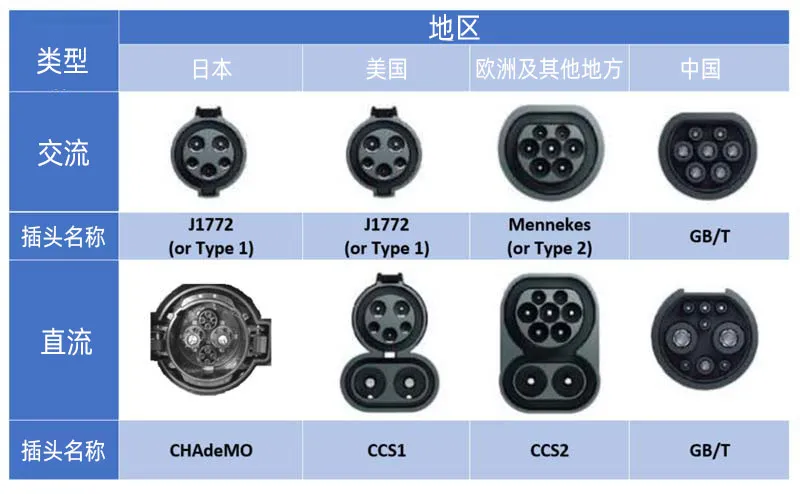
China, Germany, and Japan – the main players in the development of electric vehicles – have come together to compete and cooperate in the research and development of high power charging standards.
The Birth of ChaoJi
The China High Power Pre-Research Working Group first focused on the charging interface.
Based on previous high power technology discussions, the working group produced the “Feasibility Analysis Report on High Power Charging Interfaces,” which initially formed two approaches.
The first approach was to be backward compatible with high power charging based on the 2015 version of the charging interface. The advantages of this approach were obvious, as it was almost seamless. However, the old problems of the 2015 version of the charging interface would continue to exist.
The second approach was to develop a new high power charging interface, which had the opposite advantages and disadvantages of the first approach.
The standards makers themselves also had many regrets for the 2015 version of the fast charging interface.
“There are several core issues with the 2015 version of the interface, some of which have safety risks. The thickness and end face of its terminal do not meet the IPXXB requirements. People’s fingers can touch it, which is a safety risk,” said Liu Yongdong.
According to the IPXXB standard for the protection of the casing of electrical equipment according to ICE, the letter “B” in IPXXB represents finger proximity protection, requiring the casing to have no holes larger than 12 mm in diameter. However, the two large ports of the fast charging socket in the 2015 version have a diameter of just 12 mm.
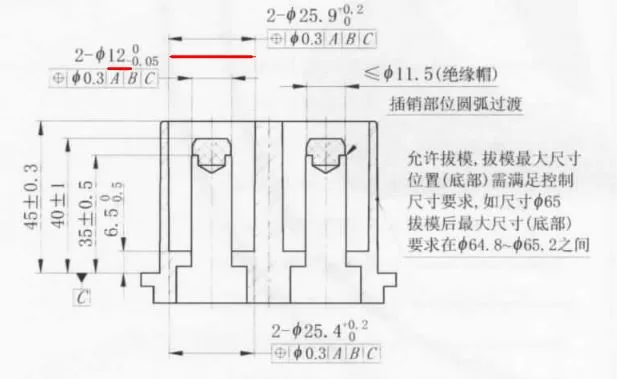
This defect also prevents Chinese GB standard vehicles from being sold in Europe.
In addition, Li Zhigang explained that the electronic lock of the 2015 version interface was located on the side of the charging pile, often leading to problems with not being able to lock or unlock it.
The danger of arcing (a momentary spark caused by the flow of electricity through some insulation medium, such as air) may occur during plugging and unplugging.
“Although we added cooling to the 2015 version interface to solve the problem of high-power charging, do we still want to carry the old problem of the 2015 version for a long time? Or do we need to solve the problem from the root?” Liu Yongdong said that everyone tended to redesign.
The high-power working group launched the charging connector manufacturers in the working group to submit designs for discussion by the working group, and absorbed the opinions of German experts after multiple rounds of eliminations. In March 2018, the working group finalized a new seven-pin, rectangular charging interface scheme.
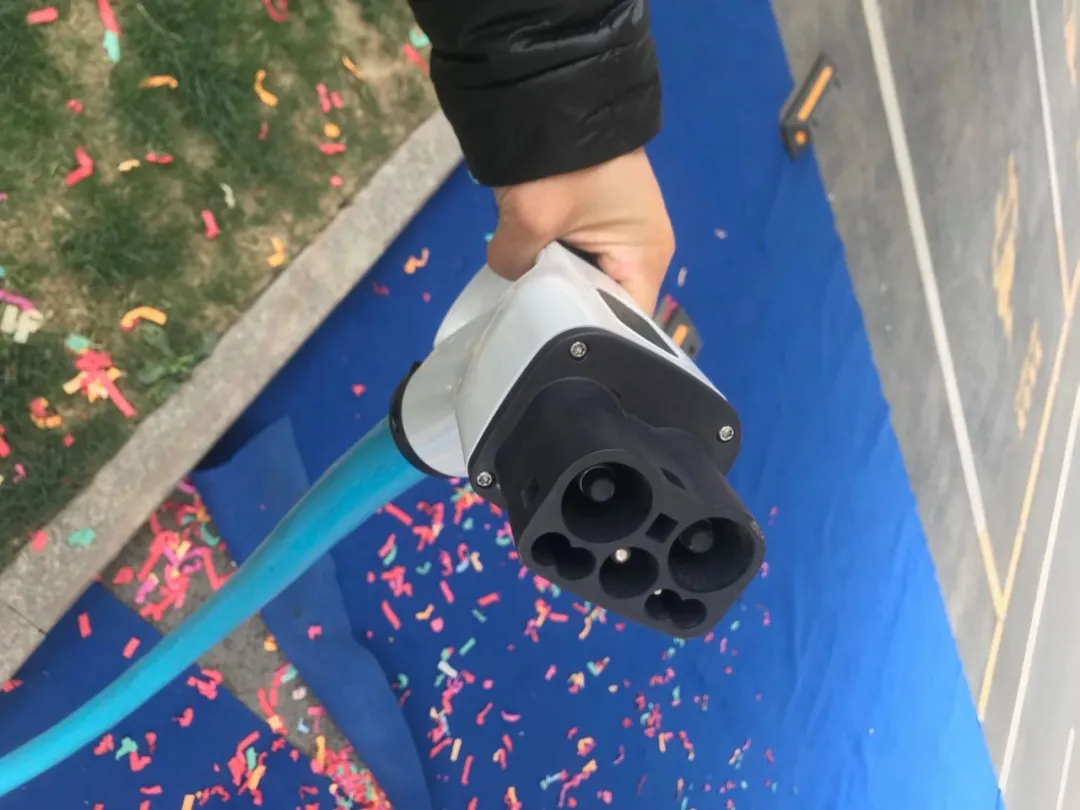
This scheme was proposed by Zou Zhiping. He proposed the scheme when he was the director of the charging connector at Wolong New Energy, and now he is the product manager of Youcheng New Energy.
“We want to make the interface surpass CCS and be smaller than it.” Zou Zhiping told the “Electric Vehicle Observer”, “Under the premise of high power, think about miniaturization.”
There are multiple reasons for pursuing “small”. Firstly, learning the European CCS’s COMBO scheme can combine AC and DC into one interface. Secondly, a smaller interface allows for more attractive vehicle interface design. Thirdly, in the future, this charging interface can also be used in electric motorcycles or other interfaces.
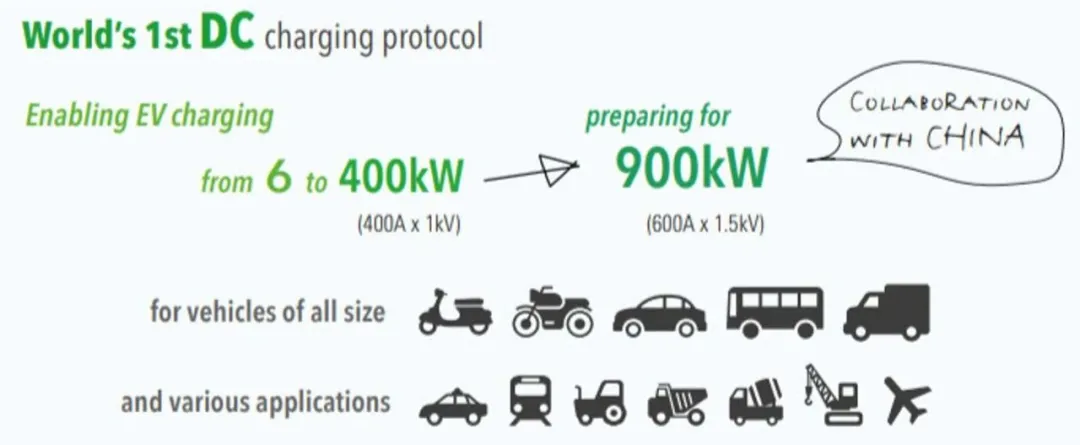
The new scheme has only 7 holes, two less than the direct current mouth of the 2015 version which has 9 holes. Zou Zhiping explained that in the old version interface, there are two auxiliary power interfaces, which are basically useless, so they are removed.
Of course, high power also needs to solve the problem of heat generation, and the larger the terminal, the better. However, it is also necessary to avoid the problem that the 2015 version does not comply with IPXXB. Therefore, the new interface takes a balance. The diameter of the charging terminal is 10 mm, which meets the requirements of IBXXB and is 2 mm and 1 mm larger than CCS and CHAdeMO, respectively.
In the past, charging interfaces in various countries were mostly circular because the circular shape is stronger. Initially, the square interface also raised doubts among the participants in terms of its strength.
Zou Zhiping said that if they are the same size, the circular one is certainly stronger than the square one. However, the square one is smaller in size. From the simulation, the compressive experiment results show that the interface strength is not a problem.Later, Youcheng New Energy produced hundreds of interface samples and sent them to domestic and foreign manufacturers for testing. The strength of the interface samples was also verified by actual testing.
Zou Zhiping’s proposal underwent minor adjustments but remained mostly unchanged after being discussed in multiple rounds by the working group of China-Germany and China-Japan high-power charging and exchange meetings.
In the summer of 2018, the ChaoJi International Joint Working Group was established, consisting of experts from multiple countries including China, Japan, Germany, Italy, the Netherlands, and Australia. Four working groups were formed (two of which were led by China) to research the development of new technology and standards, starting from the interface and extending to the connector, guidance circuit, safety standards, communication protocols, and even charging systems. Each working group of ChaoJi systematically advanced the development of new technologies and standards through monthly meetings.
As for the core interface, it was originally called the “high-power charging interface” since its inception and selection, and it was named by a Japanese person.
In July 2019, this interface appeared at the first China-Japan high-power charging international conference held in Tokyo, Japan. The representative of CHAdeMO, Nissan’s R&D engineer Uchitaka Island, proposed to name this interface. As someone who had a deep understanding of Chinese culture, he suggested naming it “ChaoJi,” which is a Chinese word meaning “super.” The meaning of “ChaoJi” was clear to both Chinese and Japanese cultures, and both sides were satisfied with the name. However, in subsequent discussions, since this standard was to go global, the Chinese characters for “super” were changed to the pinyin “ChaoJi.”
Participants still believed that this was a good name. Liu Yongdong said, “The first three letters of ‘Cha’ are the same as the first three letters of CHAdeMO, and they sound similar. At the same time, the pronunciation of ChaoJi is somewhat similar to the Japanese and English word ‘charge.’ Of course, as the pinyin letters of the Chinese word ‘super,’ ChaoJi has a strong Chinese flavor. Moreover, the English concept of ‘super’ implies that it is not only designed to solve the problem of quick charging, and hence, its meaning is relatively rich.”
Therefore, “ChaoJi” not only came into being but also began to establish its reputation.
Standard Development
Is the standard for more than just high-power charging out of the research and development stage? Consumers may have only heard about it but not seen it, and the industry is still primarily focused on R&D.
“We are researching standards, not compiling them,” said Liu Yongdong. Researching standards involves first proposing requirements and then focusing on them. Then, all participating companies propose solutions that are discussed and screened through multiple rounds to formulate the ChaoJi interface and standards.
“This is a new method for developing standards and is in line with international trends. For example, the communication industry is the most typical, in that standards are written first, then technology, then products, and finally the industry,” Liu Yongdong said. “Of course, in our traditional industries, including the electric vehicle industry, this may not be entirely feasible.”They hope to use standardized work as a lever and platform to promote the technological progress and industrialization of high-power charging. “At the Fourth Plenary Session of the 19th CPC Central Committee, “standard leadership” was proposed for the first time, and we realized this in the sense of standard leadership,” said Liu Yongdong.
Especially for interoperability issues related to charging, “wait until the entire industry has taken off before regulating interchangeability, and the impact on the industry will be even greater. A typical example is battery swapping, which is now unrealistic to implement interoperability,” according to Liu Yongdong.
The development of standards means not only standard leadership, but also demonstration and validation. “There is a background, which is that in the process of formulating the 2011 and 2015 versions of standards, too many drawbacks were discovered,” Liu Yongdong said. “In the past, when we made standards, there were no products. We just wrote the standards. After implementation, a lot of problems emerged, which was somewhat related to the lack of product verification at that time.”
“So I proposed in the process of standard formulation that we should first carry out demonstration and validation to see how mature the technology is,” Liu Yongdong said.
In the process of formulating high-power standards, several demonstration stations were built in Beijing, Shanghai, Shenzhen, Changzhou, Nanjing and Xuchang, including CEC, several domestic operators (State Grid, Wanbang, Autoyoutong), domestic car companies (Beiqi, FAW, XPeng, BYD) and foreign car companies (BMW, Mercedes-Benz, Volkswagen), to verify the Chaoji interface and technical system.
“During the verification process, we also have to prepare the draft standards. This is called pre-research on technology and standards. The draft standards for engineering construction also need to be compiled for verification. Only after verification, we think this is feasible,” Liu Yongdong said.
During the verification process, some previous concerns were dispelled.
For example, the worry about high-power charging affecting the power grid. State Grid Corporation of China is not worried about this and has built a high-power charging demonstration station in Beijing Future Science City, and conducted joint testing with Beiqi.
Since the application of high-power charging is not fully rolled out at once, there are only a few models and a few scenarios, and it will not impact the power grid all at once. In addition, State Grid Corporation is actively promoting high-power demonstrations, because the power grid hopes to centrally control the load, which is easier to plan and coordinate, rather than having dispersed and unclear loads.
As for the cable of the charging gun, many people may worry that it is heavy, but after adding liquid cooling, it is even thinner than before. “Many of these are imagined to have problems, but the benefits are only felt when they are used,” according to Liu Yongdong.
At the end of March 2019, the Electric Vehicle Observer visited a high-power charging test at the Xingxing Charging demonstration station in Changzhou.
In one demonstration, the Xingxing Charging high-power charging pile was paired with an FAW high-power charging test vehicle and charged nearly 40 kWh in 21 minutes, with a maximum charging power of 196 kW.
This is not even the highest level of this demonstration station, with the charging machine designed to have a charging capacity of 500 kW. If the Porsche Mission E is brought here for charging, it can achieve peak power of 350 kW.If high-power charging becomes widely available, it will greatly increase the utilization of resources for charging operators and may break the curse of charging operation. Shaodan Wei, the chairman of Star Charge, said “the profitability of charging operation is already very close to the turning point. The biggest cost of public charging is parking space, so the real turning point is the day when high-power charging is popularized.”
Autotie is also conducting demonstration projects in Shenzhen. According to Ligang Li, they have completed software and hardware joint debugging of high-power charging with BYD, Audi, and Daimler. Charging tests of 650V and 200A and 500V and 350A were completed respectively with BYD and Audi vehicles.
Li also revealed that in 2021, Autotie will deploy high-power charging stations in 10 districts in Shenzhen, and automakers will also introduce high-power charging demonstration vehicles to collect relevant data, discover and summarize various problems encountered, and support the formulation of subsequent high-power charging standards.
FAW Group also participates in the construction of demonstration stations and dispatched vehicles for testing. Zhang Tianqiang, deputy dean of FAW Group New Energy Development Institute, told “Electric Vehicle Observer” that after testing, the two points they cared about were the temperature rise from the charging port to the power battery line, which was verified to be within a controllable range, and the large current. During the test, the charging current reached 500A and 600A, and the power source was also not a problem.
He revealed that the new cars to be released by FAW in late 2022 or early 2023 will adopt the new ChaoJi system, and the charging power is expected to reach 350 kW.
“The degree of internationalization of this standard is relatively high,” said Liu Yongdong.
Experts from Germany and Japan, and later the establishment of the international high-power charging ChaoJi project for electric vehicles, experts from Italy, Australia, the Netherlands, Switzerland, South Korea, and other countries also participated.
However, both Liu Yongdong and Ni Feng are very positive that ChaoJi is a charging standard led by China.
Ni Feng believes that China’s leadership is reflected in at least three aspects. First, the connector interface design is proposed by China.
Second, the charging control guidance of the charging system is led by China. Ni Feng said, “ChaoJi has a very big feature, which is compatible with other charging interface systems.
This was proposed by China and was also the first scheme proposed by Nanrui. We proposed a guide circuit, showed everyone and took their feedback, if something was not working, we would change it, and it has been basically finalized after at least a year.”### Forward and Backward Compatibility
Thirdly, communication protocols are also dominated by China. “We have designed a very flexible and resilient architecture that can be iterated forward,” said Nie Feng. However, Nie Feng also said that foreign contributions are needed in terms of the security model.
“The entire ChaoJi standard, including major technical solutions, was developed by us,” said Liu Yongdong. Regardless of whether the name of ChaoJi is in Chinese characters or in Pinyin, it is a standard with a Chinese mark.
ChaoJi’s redesigned interface inevitably faces the problem of compatibility with old interfaces. Moreover, if ChaoJi wants to dominate the world, it needs to be compatible with old CHAdeMO and CCS interfaces.
ChaoJi’s participants have mostly considered this issue and have provided solutions. They have developed an adapter and designed related circuits and control switching logic to enable new cars to charge on old piles.
For example, when a new car using the ChaoJi charging standard charges on a 2015 version of a fast charging pile, the ChaoJi vehicle will automatically switch the communication protocol version to the 2015 version of the fast charging protocol and start charging after the owner plugs in the adapter. The 300,000 DC charging piles already laid out in China do not need to be modified and can be used to charge ChaoJi vehicles.
Similarly, the same solution can allow ChaoJi vehicles to charge on CHAdeMO 2.0 or earlier chargers in Japan and CCS chargers in Europe.
How to solve the problem of old cars charging on new piles?
The operator’s DC charging pile allows for multiple guns, both for ChaoJi charging guns and 2015 version charging guns. When a vehicle using the 2015 version charging standard charges, the corresponding charging gun is selected accordingly. Therefore, the owners of existing electric vehicles do not have to worry about being unable to charge.
“Standards not only need to be forward compatible, but also have a backward compatibility problem,” said Liu Yongdong. “In the future, if technology develops and there is no space reserved on the interface?”
In this regard, ChaoJi charging supports new technology applications such as plug-and-charge, V2X, and automatic charging systems, and supports future communication interface upgrades from CAN to Ethernet, leaving room for upgrading to kiloampere-level ultra-high-power charging, and fully considering future technological upgrades.
As a charging system, due to long-term planning, compatibility, and inclusion, ChaoJi may even replace slow AC charging.
“Now, slow charging is mainly done through AC charging piles, but AC charging piles have a big problem – they don’t have a communication protocol. Without a communication protocol, it’s difficult to make it intelligent,” says Liu Yongdong, “whether it’s AC charging or DC charging, it has to be DC to charge the battery.”Previously, there were some voices suggesting the removal of the OBC (on-board charger) on the car and using a low-power DC charger to charge electric vehicles, which could also solve the slow charging problem. “The ChaoJi interface is the same. Turning low-power AC into low-power DC can also be used for slow charging,” said Liu Yongdong and Ni Feng.
However, Liu Yongdong and Ni Feng both stated that the standard will not cancel AC slow charging, but rather multiple technologies will run in parallel and be left to the market to choose.
Ni Feng said that there are two parts to the 2015 version charging standard revision.
Firstly, “We will make revisions to some of the problems that existed in the previous standard, further clarifying vague descriptions, without compromising forward and backward compatibility or safety.”
Secondly, ChaoJi will be introduced and will be listed as a separate part of the standard to provide the market with a choice. “That is to say, you can continue to use the 2015 version, but ChaoJi will provide updated features and increased safety. The overall cost in the future will be lower.”
Regarding the timetable for ChaoJi to enter the national standard, Liu Yongdong said, “We hope to complete the compilation by the end of 2021 and implement it in 2022.”
Going Global
ChaoJi’s journey is not just in China, but in the whole world.
“ChaoJi is the latest solution, which does draw on the strengths of different companies, and attempts to avoid the weaknesses of various schemes,” said Li Zhigang. “In either Europe or Japan, there have been many problems with using the original plan. If there is such a plan that can solve these problems, they would welcome it.”
Under the promotion of the Chinese side, ChaoJi is moving towards an international standard.
It first obtained support from Japan. In the exchange between the China Electricity Council and the Japanese CHAdeMO standard, Japan has been keeping up with and participating in ChaoJi’s research. “Japan is even more concerned about the ChaoJi standard than we are. The Japanese do things in a very detailed manner. They do a lot of verification work on plan refinement and offer some important opinions,” said Liu Yongdong.
The CHAdeMO Association, which is currently preparing for version 3.0, has a high degree of recognition for ChaoJi. On April 20, 2019, CHAdeMO voted to adopt the ChaoJi interface solution. In March 2020, CHAdeMO released the CHAdeMO3.0 standard, announcing the adoption of the ChaoJi interface.
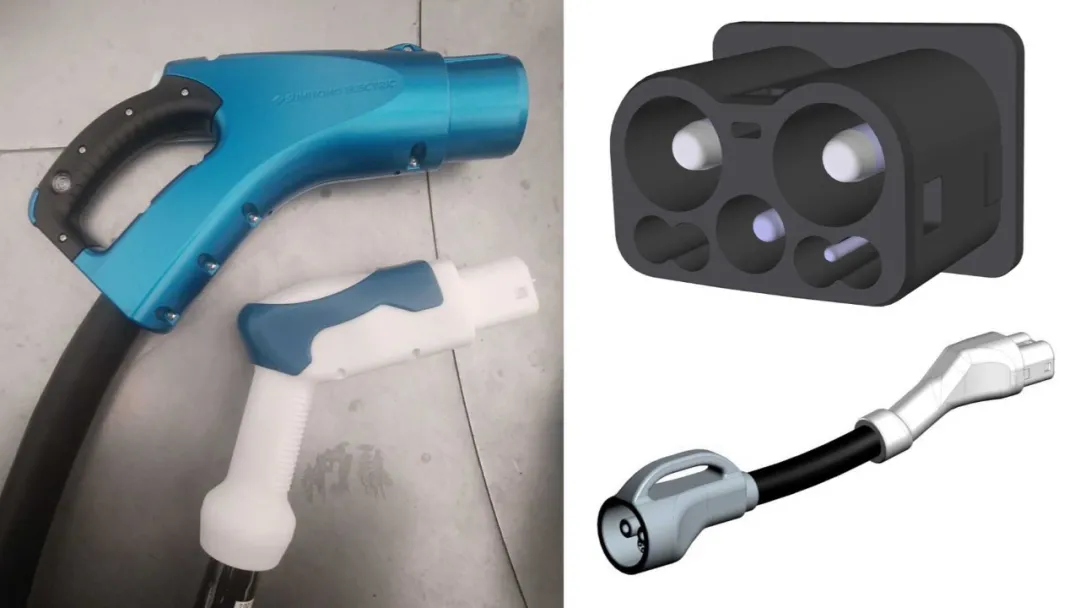 In the IEC, IEC TC69 MT5, responsible for the key charging standard 61851 series, has reached an internal consensus and will include ChaoJi as SYSTEM D in the next version of 61851-23 ED3, following the current Japanese standard (SYSTEM A), Chinese 2015 standard (SYSTEM B), and European and American standard (SYSTEM C).
In the IEC, IEC TC69 MT5, responsible for the key charging standard 61851 series, has reached an internal consensus and will include ChaoJi as SYSTEM D in the next version of 61851-23 ED3, following the current Japanese standard (SYSTEM A), Chinese 2015 standard (SYSTEM B), and European and American standard (SYSTEM C).
“We hope to unify international standards, but there may still be steps to be taken in the process,” said Liu Yongdong. “We have also proposed to Japan that while the ChaoJi interface and CHAdeMO electric performance are consistent, the communication protocol has not yet been unified, but the communication protocol itself is relatively easy to unify.”
“Finally, we are still working with Germany, and currently exchanging at the technical level,” Liu Yongdong said. Compared with CCS, the ChaoJi system has advantages of a more compact interface structure, higher strength, and better compatibility.
“Some major German car companies have participated in the Chinese ChaoJi technology program and also recognize the integrity and unity of the technology program.” However, to get Germany to adopt the ChaoJi standard and construct ChaoJi charging stations, it still faces political factors.
“Europe is an open market, and charging stations only need to have a CCS pile, and can also install CHAdeMO3.0, which is ChaoJi for us, right?” Liu Yongdong said.
The journey of ChaoJi depends on how far it can go in the market. As a new standard with advantages of later development, can it become a winning weapon for car companies to win consumers and become the mainstream standard in products? If so, the CCS standard will naturally retreat, and the European government and car companies will adopt the ChaoJi standard.
At least among participants and industry insiders, ChaoJi has received a lot of support. In a speech at the CHAdeMO3.0 launch event, the Japanese Ministry of Economy, Trade and Industry pointed out that ChaoJi’s charging technology has gradually developed into a world-oriented standard.
Alex Rudzki, Senior Electronic Design Engineer at Australian Tritium, was more direct: “I believe that ChaoJi has the potential to become a globally unified charging standard.”
This article is a translation by ChatGPT of a Chinese report from 42HOW. If you have any questions about it, please email bd@42how.com.
